Sizing a Lacrosse Stick for Youth Players 2023Sizing a Lacrosse Stick for Youth Players 2023
Consider the Player’s Age When Choosing Stick Length
When sizing a lacrosse stick for a youth player, one of the most important factors to consider is the child’s age. Lacrosse governing bodies provide guidelines on legal stick lengths correlated to age divisions. For example, US Lacrosse mandates maximum stick lengths of 35.5-37.5 inches for U11 players and 47-54 inches for U15 players. Why is age so instrumental in determining proper lacrosse stick size?
Stick length directly impacts a player’s ability to control the ball and perform fundamental lacrosse skills. Shorter sticks enable tighter cradling and quicker, more accurate passing and shooting. For stick handling, ball control trumps reach in beginning players. As children gain experience and physical coordination, longer sticks then allow them to extend their range and effectiveness on the field. However, sticks that are too unwieldy for a player’s current skill level can be detrimental by inhibiting development of proper mechanics.
Beyond basic stick skills, age-appropriate lacrosse sticks maximize scooping, cradling, and ball retention. Shorter poles keep the ball closer to inexperienced players as they run. More compact sticks also let youth focus on building confidence rather than struggling with long handles dragging on the turf. Proper sizing sets up beginners for success as they learn the fastest growing team sport in the US.
While governing bodies provide useful guidelines, coaches and parents should still consider the individual child when sizing sticks. Factors like height, strength, and coordination may mean choosing lengths on the shorter end of recommendations for some players, even if it means sizing up more frequently. With safety and skill development as priorities, optimizing control should take precedence over reach in determining youth lacrosse stick length based on age.
Maximum Legal Stick Lengths Increase with Player Age
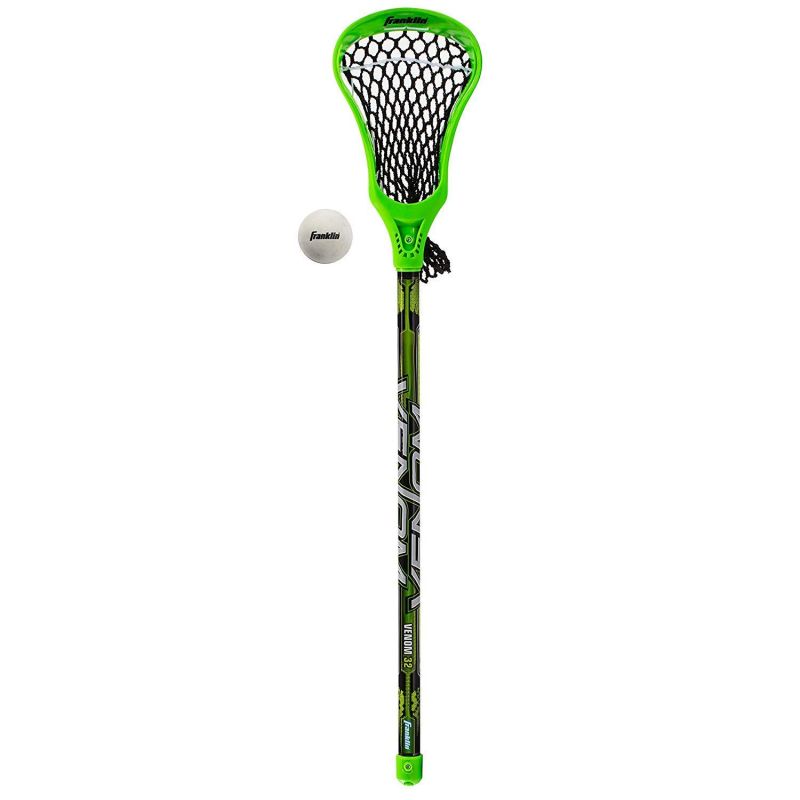
When determining the appropriate lacrosse stick length for a youth player, it’s important to be aware of the maximum legal stick lengths dictated for each age group. Governing bodies like US Lacrosse, NFHS, and NCAA provide stick sizing guidelines that increase incrementally with player age.
For example, according to US Lacrosse rules, the maximum legal lacrosse stick length for U11 players is 37.5 inches. This length limitation enables young players to more easily control the ball while cradling, scooping, passing, and shooting. At the U11 level, tight stick handling and ball retention are emphasized over reach.
As players progress in age and skill, longer stick lengths are permitted. US Lacrosse guidelines state U13 players can use sticks up to 42 inches, while U15 players may utilize lacrosse sticks up to 52 inches. The significantly longer poles better suit the physical size and improved coordination of older, more experienced athletes. Lengthier sticks provide advantages in checks, poke checks, and intercepting passes.
At the high school level, NFHS rules dictate that field players can wield sticks 40-42 inches for close defense and 52-72 inches at other positions. Goalies may use sticks 36-72 inches in length. As lacrosse is a fast paced, contact sport, controlling longer sticks necessitates strength and proficiency gained through years of practice.
The NCAA regulates men’s lacrosse sticks from 40-42 inches for close defense, 52-72 inches for field players, and 40-72 inches for goalies. For women, sticks may range from 35.5-43.25 inches in field play and 35.5-52 inches for goalies. Longer, more athletic sticks suit the faster, highly competitive nature of the college game.
While governing bodies allow for longer lacrosse sticks as players mature, coaches and parents should still consider the individual athlete’s skills and physical attributes when selecting appropriate lengths within the legal parameters. Younger players may still benefit from more compact sticks, even if longer poles are permitted for their age group. However, knowing the guidelines helps inform proper sizing decisions.
Measure From Bottom to Ensure Proper Sizing
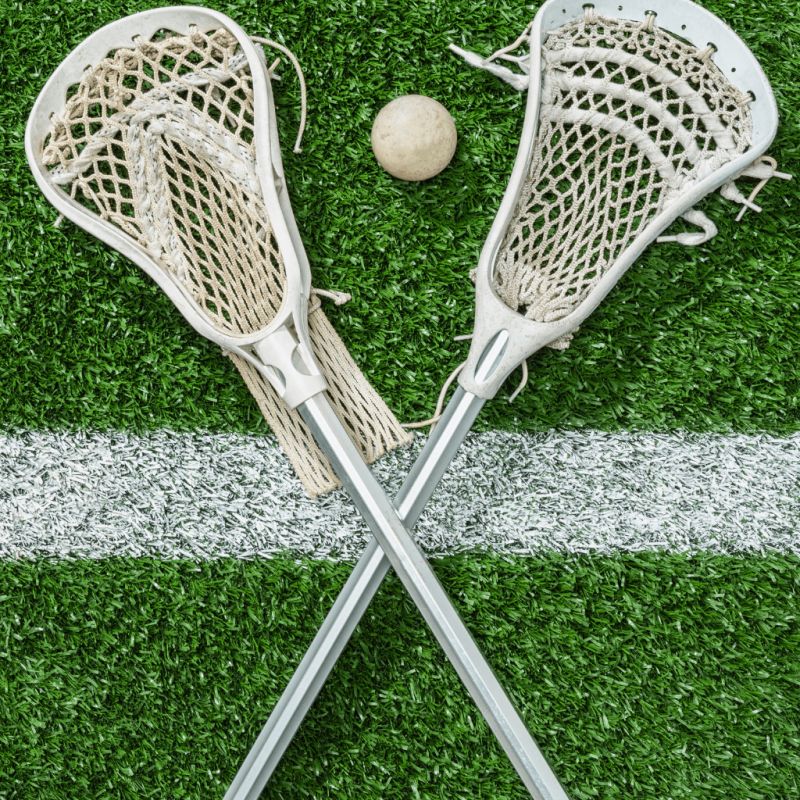
When determining the ideal lacrosse stick length for a youth player, it’s important to properly measure the stick from the bottom rather than the top. Doing so will provide an accurate sizing that optimizes the child’s performance and development.
Often players gripping the stick will measure from the top, holding the stick at an angle diagonal to their body. However, this can result in selecting a length longer than appropriate. Measuring from the top versus the bottom of the stick head can potentially mean a difference of several inches.
To find the true length, the process should always start at the plastic bottom end piece of the stick, laying the stick vertically on the ground. Measurement is then taken up the shaft to the midpoint of the head. Doing so provides an exact length from bottom to allowable end that adheres to governing body rules.
For youth players, precise stick measurement matters. Lacrosse sticks that are too long will be challenging to control, negatively impacting cradling, scooping, passing, catching, and shooting mechanics. Excess length encourages players to try to generate power strictly from the arms rather than incorporating the entire body. This leads to poor fundamentals and lack of feel for the ball.
Shorter sticks promote tight stick work and keeping the ball close to the body, critical skills for young players to develop. On the other hand, sticks on the longer end of guidelines can perhaps offer some additional reach but at the detriment of learning proper technique. Precise sizing supports maximizing skill development versus reach.
For older youth players on the cusp of moving into a longer stick length bracket, measuring from the bottom provides guidance on whether to size up or remain conservative. In some instances, a shorter stick that offers better control could be the wiser choice over maximizing allowable length.
While guidelines provide a starting point, correctly measuring from the bottom up rather than top down ensures lacrosse sticks are sized to optimize a youth player’s performance. Precision sizing sets young athletes up for success.
Shorter Stick Lengths Provide Better Control for Beginners
Maximum Legal Stick Lengths: A Comprehensive Breakdown
Understanding the maximum legal stick lengths for each age group is crucial when selecting the right equipment for youth players. Let’s break down the guidelines provided by various governing bodies:
US Lacrosse Guidelines
- U11 players: Maximum 37.5 inches
- U13 players: Up to 42 inches
- U15 players: Up to 52 inches
NFHS Rules (High School Level)
- Close defense: 40-42 inches
- Other positions: 52-72 inches
- Goalies: 36-72 inches
NCAA Regulations
- Men’s close defense: 40-42 inches
- Men’s field players: 52-72 inches
- Men’s goalies: 40-72 inches
- Women’s field play: 35.5-43.25 inches
- Women’s goalies: 35.5-52 inches
Why do these lengths increase with age? As players progress in skill and physical development, longer sticks provide advantages in checks, poke checks, and intercepting passes. However, it’s important to note that while governing bodies allow for longer lacrosse sticks as players mature, coaches and parents should still consider the individual athlete’s skills and physical attributes when selecting appropriate lengths within the legal parameters.

The Correct Way to Measure a Lacrosse Stick
Accurate measurement is crucial when sizing a lacrosse stick for youth players. Many make the mistake of measuring from the top of the stick, which can lead to selecting a length that’s too long. So, what’s the proper technique?
- Start at the plastic bottom end piece of the stick
- Lay the stick vertically on the ground
- Measure up the shaft to the midpoint of the head
This method ensures an exact length measurement, crucial for selecting the right stick size. Why is measuring from the bottom so important? It provides a consistent starting point and accounts for variations in head design, resulting in a more accurate overall length.
Balancing Control and Reach: The Stick Length Dilemma
When selecting a lacrosse stick for youth players, there’s often a trade-off between control and reach. Shorter sticks offer better ball control, while longer sticks provide extended reach. How do you strike the right balance?
For beginning players, prioritizing control over reach is generally recommended. Shorter sticks enable:
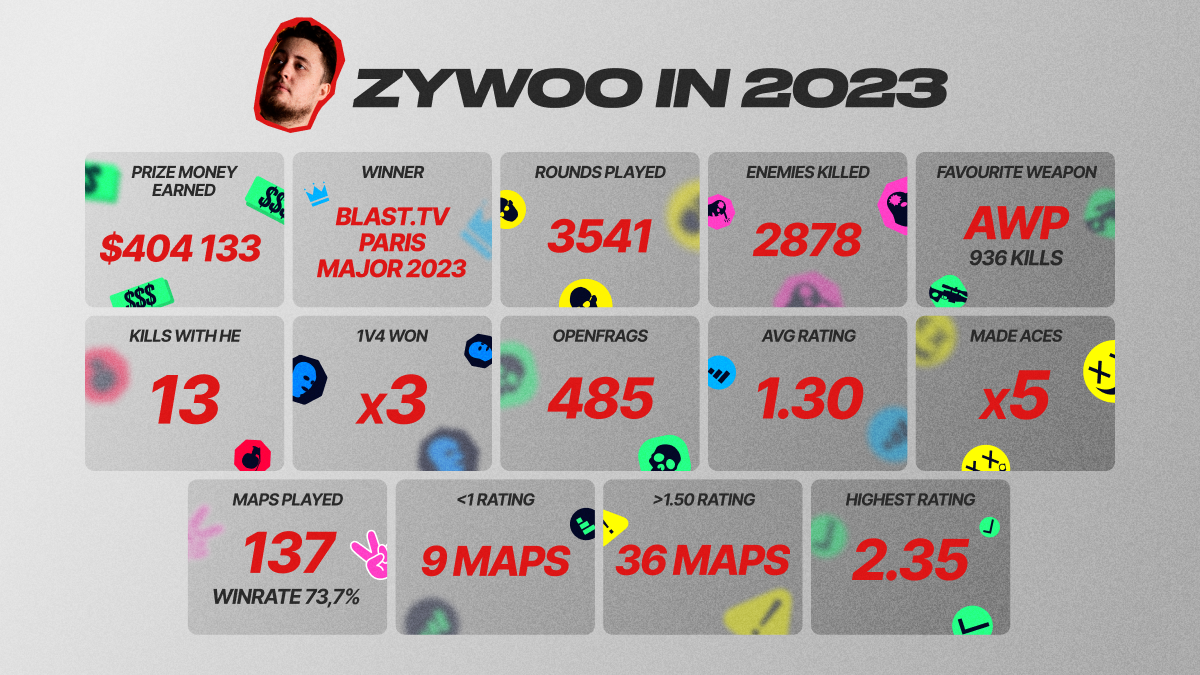
- Tighter cradling
- Quicker, more accurate passing
- Improved shooting accuracy
- Better ball retention while running
As players gain experience and physical coordination, they can gradually transition to longer sticks. This progression allows them to develop fundamental skills before tackling the challenges of managing a longer pole.
Is it ever appropriate to choose a longer stick for a younger player? In some cases, yes. Factors like height, strength, and coordination may justify selecting a stick on the longer end of the recommended range. However, this decision should be made carefully, always prioritizing the player’s ability to maintain proper form and technique.
The Impact of Stick Length on Skill Development
The length of a lacrosse stick plays a crucial role in a young player’s skill development. How does stick length influence the acquisition and refinement of fundamental lacrosse skills?
Cradling
Shorter sticks allow for tighter, more controlled cradling motions. This is especially important for younger players who are still developing hand-eye coordination and wrist strength. A properly sized stick enables players to keep the ball close to their body, reducing the risk of turnovers and building confidence in ball handling.

Passing and Catching
Accurate passing and catching require precise control of the stick. Age-appropriate stick lengths facilitate proper form, allowing players to develop consistent, repeatable motions. Shorter sticks also make it easier for young players to quickly transition from catching to throwing, a crucial skill in fast-paced game situations.
Shooting
A well-sized stick enables players to generate more power and accuracy in their shots. Younger players with shorter sticks can more easily master the fundamental shooting mechanics before progressing to more advanced techniques that longer sticks allow.
Ground Balls
Scooping ground balls is a critical skill in lacrosse. Stick length affects a player’s ability to get low to the ground and maintain proper form when picking up loose balls. Age-appropriate stick lengths ensure that young players can develop good habits without being hindered by unwieldy equipment.
How does using an improperly sized stick impact skill development? An oversized stick can lead to poor form, reduced confidence, and slower skill acquisition. Conversely, a stick that’s too short may limit a player’s reach and effectiveness as they grow and improve. Striking the right balance is key to fostering consistent skill development.

Considering Individual Factors in Stick Sizing
While age-based guidelines provide a solid starting point for lacrosse stick sizing, it’s crucial to consider individual factors when making a final selection. What personal attributes should be taken into account?
- Height: Taller players may benefit from slightly longer sticks within their age group’s range
- Strength: Players with above-average upper body strength might handle longer sticks more effectively
- Coordination: Highly coordinated athletes may adapt to longer sticks more quickly
- Playing style: Defensive-minded players might prefer longer sticks for checking and interceptions
- Position: Some positions, like close defense, typically use longer sticks
How should these factors be weighed against age-based recommendations? While it’s important to stay within the legal limits for each age group, there’s often some flexibility within those ranges. Coaches and parents should observe the player’s comfort and performance with different stick lengths to find the optimal fit.
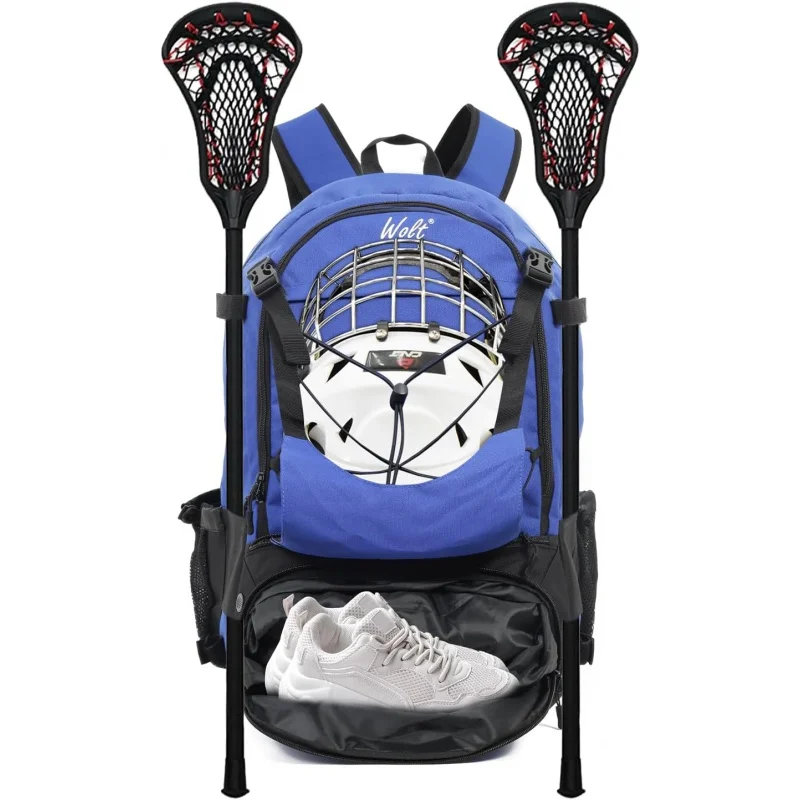
Is it better to err on the side of a shorter or longer stick? Generally, it’s safer to choose a slightly shorter stick that allows for better control and skill development. As the player grows and improves, they can gradually transition to longer sticks.
The Role of Stick Length in Player Safety
Proper lacrosse stick sizing isn’t just about performance—it’s also a crucial factor in player safety. How does stick length contribute to injury prevention and overall well-being on the field?
Reduced Risk of Overuse Injuries
Using a stick that’s too long for a player’s size and strength can lead to overuse injuries, particularly in the shoulders and arms. Age-appropriate stick lengths help ensure that players aren’t putting undue strain on their developing muscles and joints.
Improved Body Mechanics
Properly sized sticks allow players to maintain correct form during various lacrosse movements. This not only enhances skill development but also reduces the risk of injuries caused by poor body mechanics.
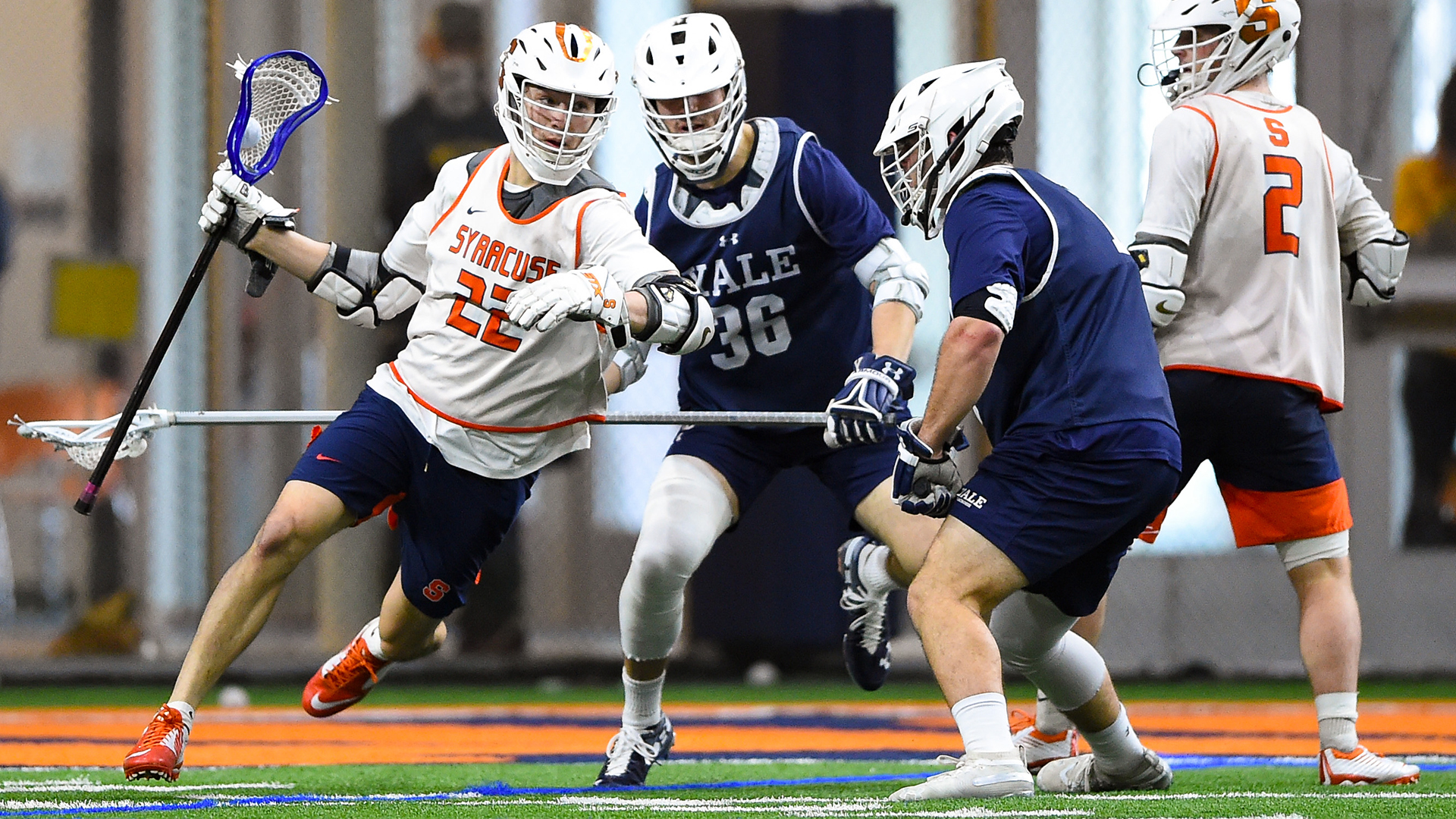
Enhanced Ball Control
Better ball control resulting from an appropriately sized stick can help prevent dangerous situations on the field. Players are less likely to lose control of the ball, potentially reducing the risk of high sticks or errant shots that could harm other players.
Manageable Checking
For age groups where checking is allowed, having a stick of the correct length ensures that players can execute legal checks without overextending themselves or losing control of their stick.
How does stick length impact a player’s ability to protect themselves on the field? A properly sized stick allows players to maintain better control and positioning, enabling them to defend themselves more effectively against checks and collisions.
Is there a safety concern with using a stick that’s too short? While less common, using a stick that’s too short can also pose safety risks. It may lead to players overreaching or lunging for balls, potentially causing loss of balance or increasing the risk of collisions.

Adapting Stick Length as Players Grow and Improve
As youth players progress in their lacrosse journey, their equipment needs will evolve. How should stick length be adjusted to accommodate physical growth and skill development?
Gradual Progression
Rather than making dramatic jumps in stick length, it’s often best to increase length gradually. This allows players to adapt their skills and techniques incrementally, maintaining confidence and performance.
Regular Assessments
Coaches and parents should regularly assess whether a player’s current stick length is still appropriate. Factors to consider include:
- Physical growth spurts
- Improvements in strength and coordination
- Advancements in skill level
- Changes in playing position or style
Balancing Current Needs and Future Potential
While it’s important to use equipment that suits a player’s current abilities, there’s also value in challenging them to grow. How can you strike this balance? Consider using a stick at the upper end of the appropriate range if a player demonstrates readiness for the added challenge.
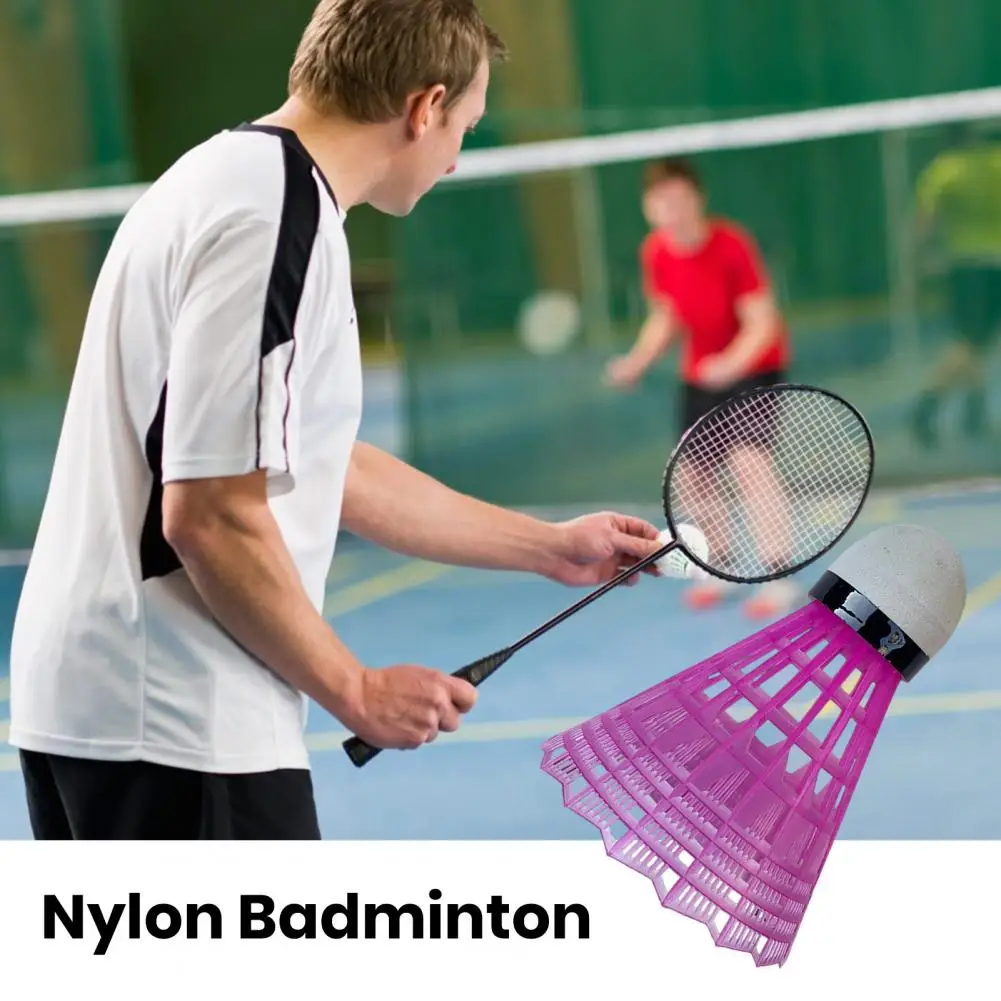
When is the right time to size up to a longer stick? Look for signs that a player has outgrown their current stick, such as:
- Difficulty maintaining proper form due to stick length
- Consistent ability to handle the ball with ease
- Expressed desire for more reach or versatility
- Approaching the upper age limit for their current stick length
Remember, the goal is to provide equipment that enhances skill development and enjoyment of the game. By carefully considering stick length throughout a player’s growth, you can ensure they always have the tools they need to succeed on the lacrosse field.
Consider the Player’s Age When Choosing Stick Length
When sizing a lacrosse stick for a youth player, one of the most important factors to consider is the child’s age. Lacrosse governing bodies provide guidelines on legal stick lengths correlated to age divisions. For example, US Lacrosse mandates maximum stick lengths of 35.5-37.5 inches for U11 players and 47-54 inches for U15 players. Why is age so instrumental in determining proper lacrosse stick size?
Stick length directly impacts a player’s ability to control the ball and perform fundamental lacrosse skills. Shorter sticks enable tighter cradling and quicker, more accurate passing and shooting. For stick handling, ball control trumps reach in beginning players. As children gain experience and physical coordination, longer sticks then allow them to extend their range and effectiveness on the field. However, sticks that are too unwieldy for a player’s current skill level can be detrimental by inhibiting development of proper mechanics.
Beyond basic stick skills, age-appropriate lacrosse sticks maximize scooping, cradling, and ball retention. Shorter poles keep the ball closer to inexperienced players as they run. More compact sticks also let youth focus on building confidence rather than struggling with long handles dragging on the turf. Proper sizing sets up beginners for success as they learn the fastest growing team sport in the US.
While governing bodies provide useful guidelines, coaches and parents should still consider the individual child when sizing sticks. Factors like height, strength, and coordination may mean choosing lengths on the shorter end of recommendations for some players, even if it means sizing up more frequently. With safety and skill development as priorities, optimizing control should take precedence over reach in determining youth lacrosse stick length based on age.
Maximum Legal Stick Lengths Increase with Player Age

When determining the appropriate lacrosse stick length for a youth player, it’s important to be aware of the maximum legal stick lengths dictated for each age group. Governing bodies like US Lacrosse, NFHS, and NCAA provide stick sizing guidelines that increase incrementally with player age.
For example, according to US Lacrosse rules, the maximum legal lacrosse stick length for U11 players is 37.5 inches. This length limitation enables young players to more easily control the ball while cradling, scooping, passing, and shooting. At the U11 level, tight stick handling and ball retention are emphasized over reach.
As players progress in age and skill, longer stick lengths are permitted. US Lacrosse guidelines state U13 players can use sticks up to 42 inches, while U15 players may utilize lacrosse sticks up to 52 inches. The significantly longer poles better suit the physical size and improved coordination of older, more experienced athletes. Lengthier sticks provide advantages in checks, poke checks, and intercepting passes.
At the high school level, NFHS rules dictate that field players can wield sticks 40-42 inches for close defense and 52-72 inches at other positions. Goalies may use sticks 36-72 inches in length. As lacrosse is a fast paced, contact sport, controlling longer sticks necessitates strength and proficiency gained through years of practice.
The NCAA regulates men’s lacrosse sticks from 40-42 inches for close defense, 52-72 inches for field players, and 40-72 inches for goalies. For women, sticks may range from 35.5-43.25 inches in field play and 35.5-52 inches for goalies. Longer, more athletic sticks suit the faster, highly competitive nature of the college game.
While governing bodies allow for longer lacrosse sticks as players mature, coaches and parents should still consider the individual athlete’s skills and physical attributes when selecting appropriate lengths within the legal parameters. Younger players may still benefit from more compact sticks, even if longer poles are permitted for their age group. However, knowing the guidelines helps inform proper sizing decisions.
Measure From Bottom to Ensure Proper Sizing

When determining the ideal lacrosse stick length for a youth player, it’s important to properly measure the stick from the bottom rather than the top. Doing so will provide an accurate sizing that optimizes the child’s performance and development.
Often players gripping the stick will measure from the top, holding the stick at an angle diagonal to their body. However, this can result in selecting a length longer than appropriate. Measuring from the top versus the bottom of the stick head can potentially mean a difference of several inches.
To find the true length, the process should always start at the plastic bottom end piece of the stick, laying the stick vertically on the ground. Measurement is then taken up the shaft to the midpoint of the head. Doing so provides an exact length from bottom to allowable end that adheres to governing body rules.
For youth players, precise stick measurement matters. Lacrosse sticks that are too long will be challenging to control, negatively impacting cradling, scooping, passing, catching, and shooting mechanics. Excess length encourages players to try to generate power strictly from the arms rather than incorporating the entire body. This leads to poor fundamentals and lack of feel for the ball.
Shorter sticks promote tight stick work and keeping the ball close to the body, critical skills for young players to develop. On the other hand, sticks on the longer end of guidelines can perhaps offer some additional reach but at the detriment of learning proper technique. Precise sizing supports maximizing skill development versus reach.
For older youth players on the cusp of moving into a longer stick length bracket, measuring from the bottom provides guidance on whether to size up or remain conservative. In some instances, a shorter stick that offers better control could be the wiser choice over maximizing allowable length.
While guidelines provide a starting point, correctly measuring from the bottom up rather than top down ensures lacrosse sticks are sized to optimize a youth player’s performance. Precision sizing sets young athletes up for success.
Shorter Stick Lengths Provide Better Control for Beginners
When sizing a lacrosse stick for a youth player just starting in the sport, shorter stick lengths typically provide better overall control and set young athletes up for success.
Maximum stick lengths allowed by lacrosse governing bodies understandably increase by age group as players progress in their physical development. However, coaches and parents should take a nuanced view when outfitting beginners rather than automatically going for longer poles simply because regulations permit it.
Especially for players ages 10 and under, maneuvering a stick closer to the minimum length range grants crucial advantages. Shorter handles allow young players to keep the stick and ball tucked closer to their body when cradling, enabling tighter stick work. This engenders confidence in transporting the ball fluidly up and down the field.
In addition, more compact sticks provide quicker passing and shooting motions along with added accuracy. The reduced distance from hands to head offers superior leverage and wrists that can snap more easily. Players have a better overall feel for shooting and passing with precision.
During ground balls, beginning players benefit from sticks sized for optimal scooping rather than maximum reach. Shorter poles allow athletes to achieve lower scooping leverage essential for gaining possession. Especially against bigger, stronger opponents, a tight stick seal secures 50/50 balls.
For defenders, stick checking and poke checking are best learned with shorter poles that afford greater control. Goalies also depend on compact sticks for lightning fast rotations and movement defending the net.
While lacrosse sticks with minimum lengths may require upgrading more frequently as young athletes grow, the trade-off in developing fundamentals can be well worth it. Proper sizing recognizes that smaller often equates to greater control for nascent lacrosse players.
Stick Handling Improves with Sticks Sized for Age and Height
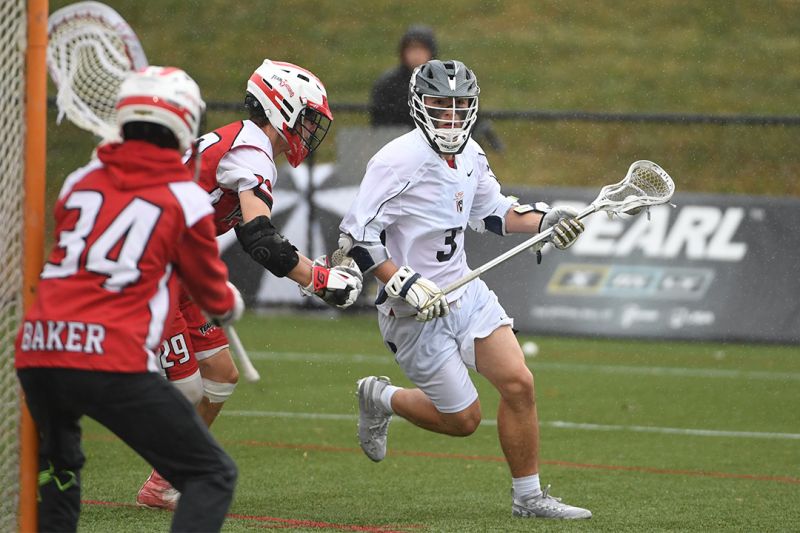
When sizing a lacrosse stick for a youth player, properly fitting the stick to align with the athlete’s age and height will help maximize their stick handling skills and overall field performance.
Stick handling involves controlling the ball in the pocket with precision to cleanly catch, cradle, switch hands, pass, shoot, and fake out opponents. Mastery requires maximizing leverage while maintaining quick, nimble wrists and arms. Sticks that are too long or short for a player’s current physical attributes will hinder development of proper technique and feel.
For example, an oversized stick with a long shaft hampers stick work by making it challenging to tightly cradle the ball and keep it tucked into the body. Excess length forces players to try generating power from the arms alone rather than incorporating the kinetic chain. This leads to slower, clunkier handling as well as accuracy issues.
However, lacrosse sticks on the shorter end of guidelines aligned with age and height offer advantages. The reduced shaft distance from hands to head provides better leverage for quicker motions, tighter cradling, and enhanced shooting and passing precision. Proper sizing tailored to age and size sets up youth players for success.
Conversely, sticks sized too compactly can also inhibit development by making it difficult to achieve full, proper throwing motions. Additionally, undersized poles reduce reach and the ability to shield the ball from checks. Lengths outside reasonable parameters for a player’s current physique will limit skill progression.
While governing body guidelines provide a starting point, coaches and parents can further optimize sizing by considering the individual athlete. Are they tall for their age or positioned to hit a growth spurt? Then a stick on the longer end of recommended lengths accommodates upcoming size increases. Is the player exceptionally short or slight? Prioritize control with a more compact stick.
Dialing in lacrosse stick size for age and height indicates an investment in the young athlete’s advancement. Properly fitted sticks grant youth players the tools to elevate their stick skills and enjoy the sport.
Proper Sizing Aids Development of Cradle and Passing Skills
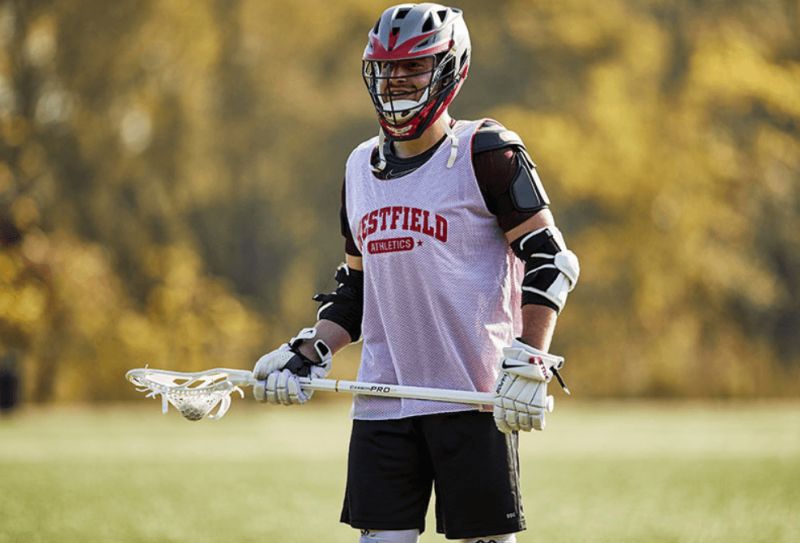
When determining the ideal lacrosse stick length for a youth player, proper sizing aligned with the athlete’s age, size, strength and coordination will help optimize development of essential cradle and passing skills.
Cradling involves fluidly transporting the ball in the stick head pocket up and down the field. Quick, controlled stick work keeps the ball secure against checks and pokes. Tight cradling tucks the ball closely into the athlete’s body, enabling maneuverability. Sticks with excess length make it challenging for beginning players to achieve crisp cradling mechanics.
Instead, more compact stick sizing allows youth to master keeping the elbows tucked and wrists engaged for efficient cradling. Shorter handles provide better leverage to nip the ball in the pocket and roll with fluid cradle motions. Properly fitted sticks empower young players to maintain possession while evading opponents.
In addition to cradling, dialing in lacrosse stick size optimizes development of accurate passing. Compact sticks provide better feel for snapping the wrists and arms through passes. The shorter distance from handle to head offers superior ball control and handling.
Conversely, passing with an oversized stick makes it difficult to utilize the kinetic chain and generate power from the legs and core. Passing becomes all arms, compromising accuracy. Excessive length also slows release time, telegraphing passes to defenders.
Properly sized sticks tailored to a player’s current ability enables progression in passing technique. Quicker, more precise passing unlocks offensive potential through speedy ball movement. Accurate outlets reward teammates sprinting into space upfield.
While length maximums increase with age brackets, coaches and parents should still prioritize control, cradling, and passing fundamentals when sizing sticks for youth. Proper fit aids skill building essential to excelling in lacrosse’s fastest growing demographic.
Sticks Too Long Encourage Poor Mechanics and Lack of Control
When sizing a lacrosse stick for a youth player, avoiding excessive length is key to prevent reinforcing poor fundamentals and lack of control.
With beginner and even intermediate players, lacrosse sticks on the longer end of allowable guidelines can do more harm than good. The oversized shafts compromise proper throwing, catching, cradling, and shooting mechanics critical for advancement.
For example, goalies and defenders rely on lightning quick stick movements and rotations to protect the net and intercept passes. But sticks with too much length hamper precise footwork and tight angles needed for proficiency. Reaction time suffers.
For all positions, overlong poles encourage beginners to muscle passes and shots using mostly arm strength rather than properly activating the kinetic chain. This results in slower, weaker throws with accuracy issues. Players then struggle regaining possession on errant passes and shots leading to turnovers.
In addition, extended shafts make it challenging to cradle tightly and shield the ball from checks. Lack of control causes fumbles and inhibits ball retention upfield. Frustration grows as players fight unnecessarily long sticks.
Further, scooping ground balls becomes nearly impossible without proper sizing. Excess length prevents achieving the leverage required to rake balls off the turf. Opponents then capitalize on possessions.
While youth will grow into longer poles as they gain experience, starting out with unwieldy sticks develops bad habits. Proper sizing aligned with ability focuses on tight fundamentals that will serve players long-term rather than instant gratification of max length.
For parents and coaches, optimizing development means not equating longer sticks with better performance. Sizing discipline ensures youth build skills the right way.
Length Directly Impacts Ability to Scoop Ground Balls

When determining the ideal lacrosse stick length for a youth player, it’s important to recognize the direct impact proper sizing has on optimizing ground ball scooping ability.
In the fast-paced lacrosse game of runs and momentum swings, ground balls represent invaluable possessions. Securing 50/50 balls before the opposition ignites transition opportunities. For offensive players, scooping turnovers and errant shots means more chances to attack the goal. Defenders scoop to initiate critical clears and maintain defensive integrity.
To master scooping ground balls, players rely on optimal hand placement low on the shaft for maximum leverage. But sticks with excessive length make it nearly impossible for youth to achieve proper hand positioning. Their bottom hand slides too far down the pole, severely compromising leverage.
In addition, overlong shafts prevent the athletic stance required to explode through the ball on contact. Poor body positioning leads to glancing scoops that often carom right back to opponents. Lack of leverage also allows the ball to slip under the stick head rather than securely sealing possession.
Shorter lacrosse sticks sized appropriately for a player’s age and ability provide a scooping advantage. The bottom hand can properly grip low on the shaft for optimal leverage and explosion out of an athletic stance. Reduced distance from hands to head enhances feel for scooping through the ball.
Dialing in stick length equips developing players with the tools for scooping success. In the battle for possession, properly sized sticks give youth players the competitive edge to pounce on contested ground balls.
For parents and coaches focused on maximizing players’ development, skill and confidence growth occurs when athletes have lacrosse sticks sized to excel. While length maximums increase with age, scooping ground balls requires prioritizing control and leverage.
Consult Coaches or Guidelines for Recommended Lengths by Age
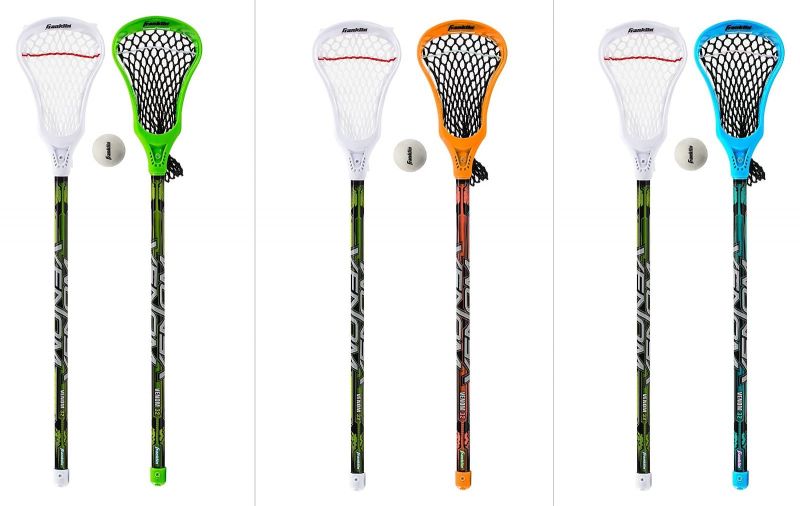
When looking to size a lacrosse stick appropriately for a youth player, consulting coaches or published guidelines for recommended lengths correlated to age provides an informed starting point.
Governing bodies like US Lacrosse, NFHS, and NCAA have specific rules regulating lacrosse stick dimensions including maximum lengths permitted based on age divisions and levels of play. While these serve as useful references, coaches with hands-on experience can further fine-tune sizing specifics.
For example, US Lacrosse mandates high school field players use sticks 40-42 inches for close defense and 52-72 inches at other positions. However, within those ranges an individual coach may advocate shorter poles for JV players to enhance control and fundamentals. Varsity players with advanced skills and strength may wield max length sticks to optimize reach.
Knowledgeable coaches have worked with hundreds if not thousands of players across ability levels. They understand the nuances of dialing in length based on skills, experience, physical attributes, and position. Their personalized guidance helps optimize sizing for each athlete.
In addition, leading lacrosse equipment manufacturers like Maverik, STX, and Warrior publish fitting guides and recommended lengths tailored to age. These on-field insights provide another useful data point when determining size.
While generational guidelines and coach input establish guardrails, evaluating each athlete’s capabilities helps finalize precise sizing. However, consulting established resources first equips parents and players with informed perspectives on appropriate lacrosse stick lengths for youth.
Proper sizing optimizes a young athlete’s advancement in the sport’s fastest growing demographic. Taking advantage of available guidance on length by age provides a head start in the process.
Allow Room to Grow When Sizing Borderline Age Groups
When sizing a lacrosse stick for youth players on the cusp of moving into the next age bracket, it can be wise to allow a little extra length to accommodate imminent growth spurts.
Governing bodies like US Lacrosse dictate specific lacrosse stick sizing guidelines based on age divisions. For example, the maximum legal length increases from 37.5 inches for U11 players to 42 inches for U13 participants. Athletes playing up or on the older edge of their current age group will soon be leaping into a longer stick.
In these borderline cases, rather than sizing at the minimum end of the allowed range, leaving margin for growth within the same stick optimizes fit for a longer period. This prevents needing to purchase a new stick mid-season as the athlete’s height and wingspan expand.
When in doubt, consult coaches for their experiences with athletes of similar age and abilities. Coaches see hundreds of players across development curves and can provide guidance on expected growth trajectories.
In addition, consider the player’s family genetics. If mom and dad are tall, the adolescent is likely facing a rapid ascent up the height chart as well in the coming months. Factor in some extra length to accommodate future physical maturity.
However, it’s still important not to oversize borderline players where control and fundamentals would be compromised. Sticks that are too long hamper skill development. But allowing a couple extra inches of room provides insurance against outgrowing gear mid-season when a growth spurt hits.
For serious youth players passionate about excelling in lacrosse, having the right sized stick throughout the season maximizes participation and skill building. Planning ahead for expanding athletes supports their continued progression in the sport.
Lighter Materials Enable Control with Longer Sticks
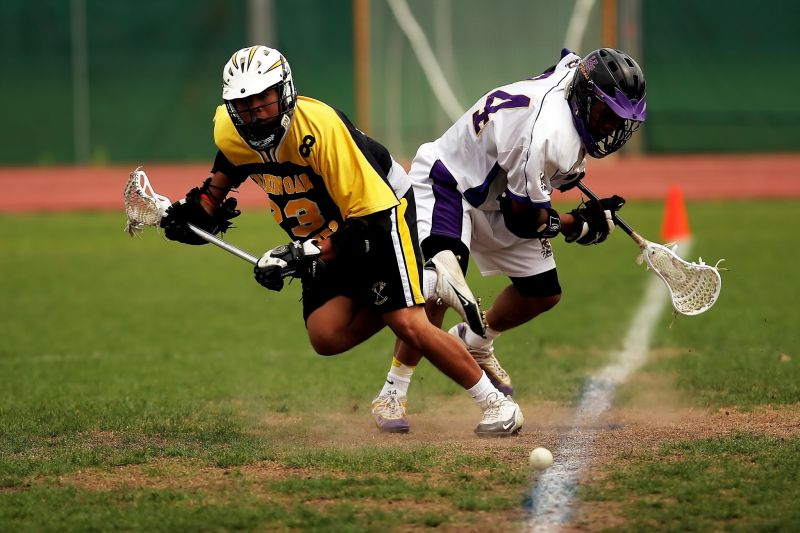
When sizing up youth lacrosse players to longer stick lengths allowed at older age levels, selecting lighter shaft materials can help maintain control and maneuverability.
As young athletes grow and gain experience, they eventually progress to the extended lacrosse stick lengths permitted by governing bodies for their new age bracket. While the longer shafts provide benefits in reach, poke checks, and checks, the added weight can undermine fundamentals.
Traditional solid titanium or alloy shafts at max lengths introduce unwieldiness. The heavier poles become challenging for youth players to swing smoothly through passing, shooting and checking motions. Stick handling suffers along with accuracy.
However, newer composite shaft materials like carbon fiber weigh far less than metal alloys. The ultra lightweight shafts enhance maneuverability and maintain tight control even at longer lengths. Players experience much greater agility versus heavier solid metal sticks.
For example, carbon fiber attack shafts from Epoch weigh under 100 grams compared to over 175 grams for alloy. Reduced heft allows precise cuts, quick changes of direction, and fluid footwork. Lightness promotes control.
Furthermore, advanced composites like carbon fiber prove more durable than standard alloys. They resist dents and damage from checks and slashes. Carbon’s improved stiffness also provides superior ball feel and sharper passing.
The balanced strength and featherweight control of carbon fiber lacrosse shafts allow youth players to optimize newer, longer sticks as they progress in the sport. Keeping sticks light maximizes athletic potential.
Balance Desired Skills with Comfort and Confidence
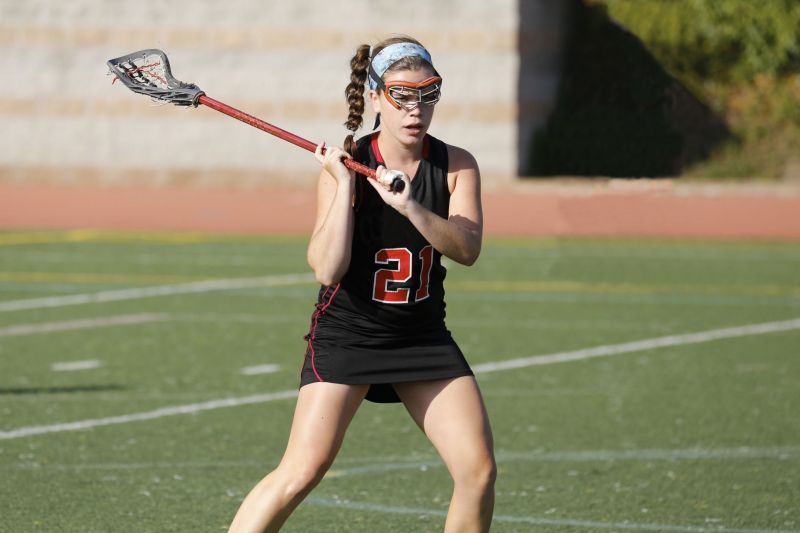
When sizing a lacrosse stick for a youth player, it’s important to balance the desired skills and reach with the athlete’s comfort level and confidence wielding the stick.
Maximizing performance means selecting lacrosse stick lengths aligned with an athlete’s physical attributes and abilities. However, sticks sized too aggressively can undermine success by shaking confidence and discomforting the player.
For example, a coach may want to size up an intermediate player to a longer pole to enhance pokes, checks, and takeaways. But if the athlete expresses apprehension about controlling the additional length or if it noticeably hampers mechanics, the intended benefits backfire.
Likewise, a gifted player may request the maximum length allowed for anticipation of greater reach. But if the long shaft proves unnatural and awkward for their current coordination, it damages fluidity and feel. Overeager sizing undermines timing.
The priority should be equipping youth athletes with sticks sized for peaking self-assurance, not maximizing specifications. Players gain trust in their abilities by wielding equipment that feels like an extension of themselves, not an obstacle.
Consulting the young player about what lacrosse stick length allows them to play their best proves insightful. Coaches and parents should remain open to feedback on comfort level while still providing guidance on lengths optimized for skill progression.
With confidence and stick skills developed in unison, young athletes can then graduate comfortably up the sizing scale through subsequent seasons. Patience prevents undermined potential through sticks pushed too aggressively on youth players.